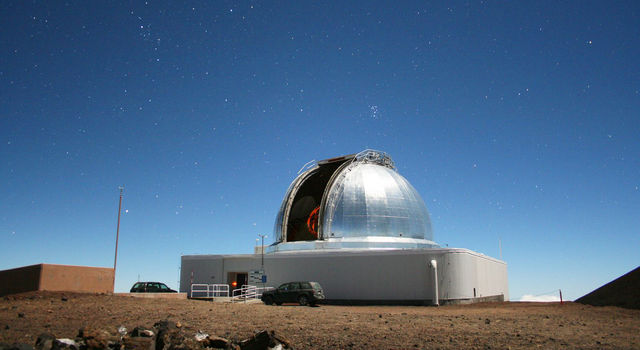Blogs | JPL | December 8, 2014
Forests and Climate Change
Riley Duren, chief systems engineer for the Earth Science and Technology Directorate at NASA's Jet Propulsion Laboratory, is reporting from the 2014 United Nations Climate Conference in Lima, Peru.
I mentioned previously that Peru is home to some of the most important forests in the world in terms of their vulnerability to future impacts from climate change and development pressure as well as their potential to mitigate climate change. This underscores the importance of certain elements of the UN Framework Convention on Climate Change. In particular, the Reduction of Emissions from Deforestation and forest Degradation (REDD+) program seeks to address the second-largest human contribution to climate change after fossil fuel use (see Friday's post).
Detailed definitions vary, but deforestation generally refers to conversion of forested lands to some other use -- particularly large-scale agriculture but also mining and expansion of infrastructure and cities. Degradation is distinct and refers to a diminished capacity of forests to store carbon, support ecosystems and other services. Forest degradation is caused by human activity such as commercial logging, fuel wood collection, charcoal production, and livestock grazing as well as natural forces like storms, insect damage and wildfires.
Forests play a critical role in Earth's carbon budget because healthy, growing trees and other forest elements remove and store carbon from the atmosphere -- converting it to "biomass" in trees, shrubs and soil. This makes forests one of the most effective countermeasures for fossil fuel CO2 emissions (see graph, below).

The Earth's evolving carbon budget from the start of the Industrial Revolution through present day. Carbon dioxide (CO2) flux is shown in units of Giga (billion) tons of carbon per year (GtC/year). Fluxes of carbon emitted to the atmosphere are indicated by "+". Fluxes of carbon removed from the atmosphere are indicated by "-". The plot shows the dramatic growth in fossil fuel CO2 emissions since the mid-20th century and slight decline in emissions from deforestation and other land use change. The graph also shows the corresponding growth in the three major carbon sinks: the atmosphere, land (forests) and oceans. The variability or "jumpiness" in the land sink from year to year is likely due to changes in precipitation associated with climate variability like El Nino. The future ability of the land and oceans to remove CO2 from the atmosphere remains an area of great uncertainty. Image source: Global Carbon Project
However, when forests are degraded or destroyed, the storage potential of the forest is reduced or eliminated. Additionally, if the downed trees are burned and/or decay and forest soils are disturbed, they release their stored carbon (sometimes centuries worth) into the atmosphere. So there's an incentive to both keep forests growing to store carbon and to avoid disturbing the carbon already stored in them.
Programs like REDD+ are intended to incentivize governments and landowners to preserve and restore their forests. For example, in carbon-trading programs, governments and business can "offset" their fossil fuel CO2 emissions by purchasing credits from forest owners who can prove they're storing an equivalent amount of emissions by implementing certain protocols, including independent measurement and verification. These efforts are particularly important in the tropics, which are home to most of the world's forest carbon, as well as the countries experiencing the most rapid growth and development pressures, very similar to the period of growth the US underwent in the 1800s.
Over the weekend, I attended the Global Landscape Forum to interact with policy makers, conservation groups and scientists on the subject of forest carbon monitoring. One of the panel sessions featured JPL's Dr. Sassan Saatchi and other experts who described the current capabilities and limitations of remote-sensing tools to assess the status and health of forests, including their carbon stocks and "fluxes" (removals from and emissions to the atmosphere).
The remote-sensing methods discussed included imaging systems like the US Landsat satellites that are being used to track forest-cover change as well as future systems that will improve understanding of forest degradation such as NASA's ICESAT-2 mission, the NASA-India Synthetic Aperture Radar (NI-SAR) and the European Space Agency's BIOMASS mission. The role of flying radar and lidar (laser radar) instruments on aircraft over high priority areas was also discussed.
Of course decisions about forest management involve dimensions other than climate change mitigation -- typically involving a balance between economic growth and the value of existing ecosystem services offered by forests. Biodiversity in particular is gaining prominence in decision-making given the societal and economic value it represents. Biodiversity, which refers to the number of species in a given area, is often highest in forest ecosystems (particularly in the tropics) given they provide a combination of food, shelter and water resources. The information required to evaluate biodiversity is related to, but distinct from, the data used to assess forest carbon. (I'll try to describe the role of remote-sensing in assessing biodiversity in a future post.)
Meanwhile, closing with some personal experience, I'm posting a couple of photos I took while working on my own forest conservation and biodiversity project in Hawaii.

A cloud forest on the flank of Hualalai volcano on the Big Island of Hawaii. The giant, ancient trees and native understory plants thrive in the high-altitude, moist environment provided by the persistent presence of clouds -- providing carbon storage as well as a habitat for threatened plant and bird species. The benefits of the unique Kona weather pattern are offset by the introduction of invasive weeds and destructive feral animals like pigs and sheep.Image credit: Riley Duren

A threatened I'iwi honeycreeper, endemic to the Hawaiian Islands, sips nectar from an Ohia tree blossom. Historically, this species ranged across the Hawaiian Islands but today only survive in a few high-elevation forests given the combined pressure of deforestation and avian malaria at lower elevations from non-native mosquitoes. The I'iwi, like many other Hawaiian bird and plant species, lacks the natural defenses to withstand the combined pressure from development and climate change. Management efforts focus on conserving, restoring and building resiliency in threatened forest habitats. Image credit: Riley Duren
TAGS:EARTH, FORESTS, CLIMATE CHANGE, CARBON







